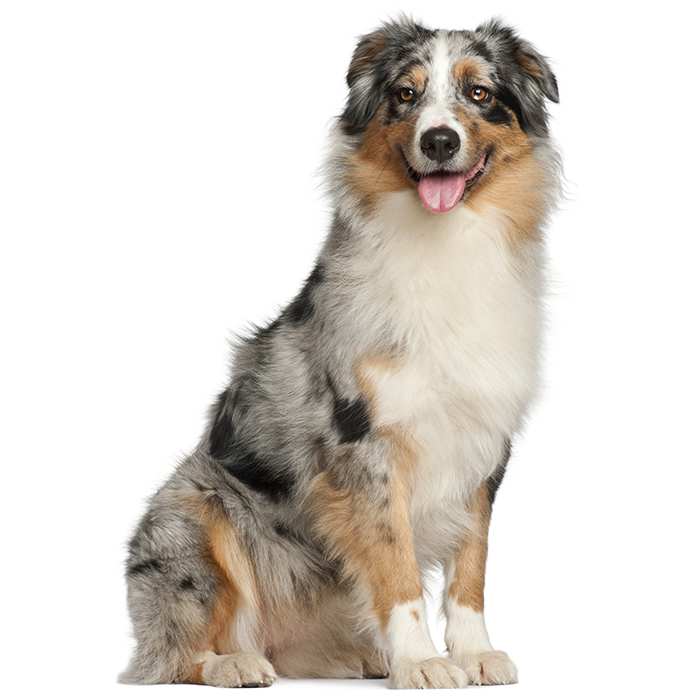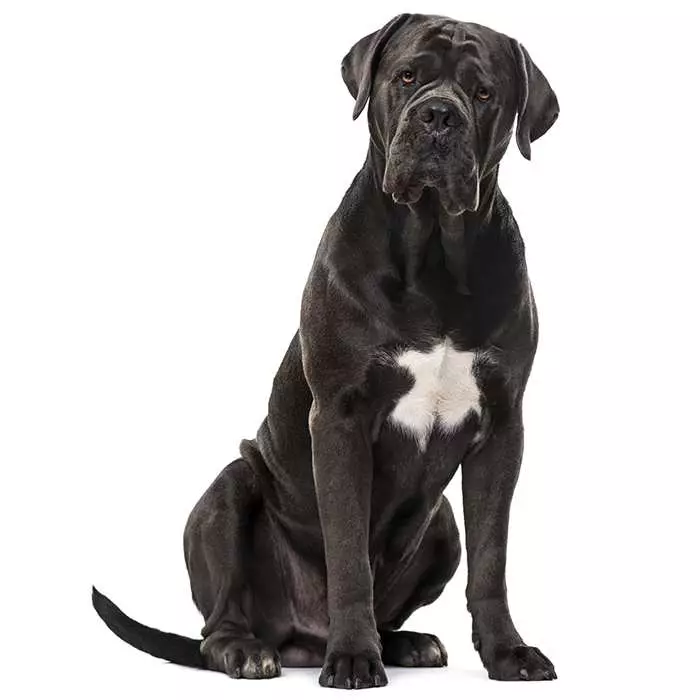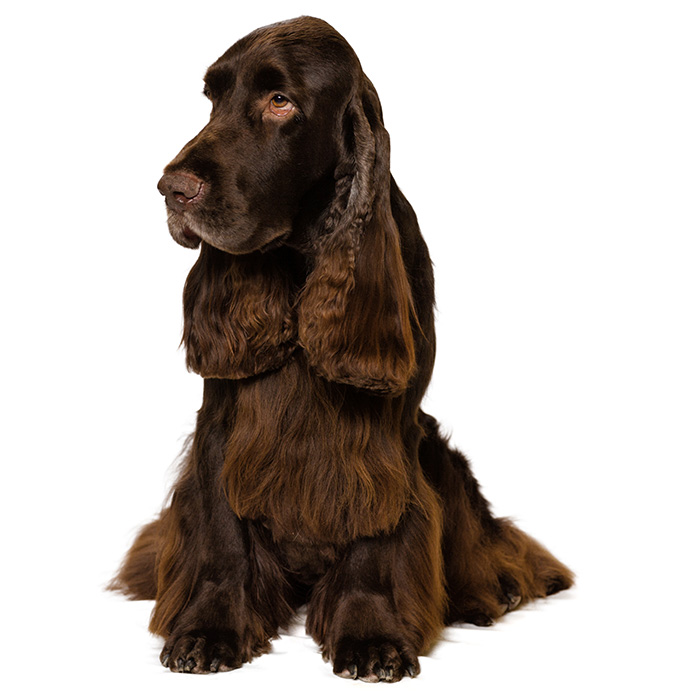Boxer
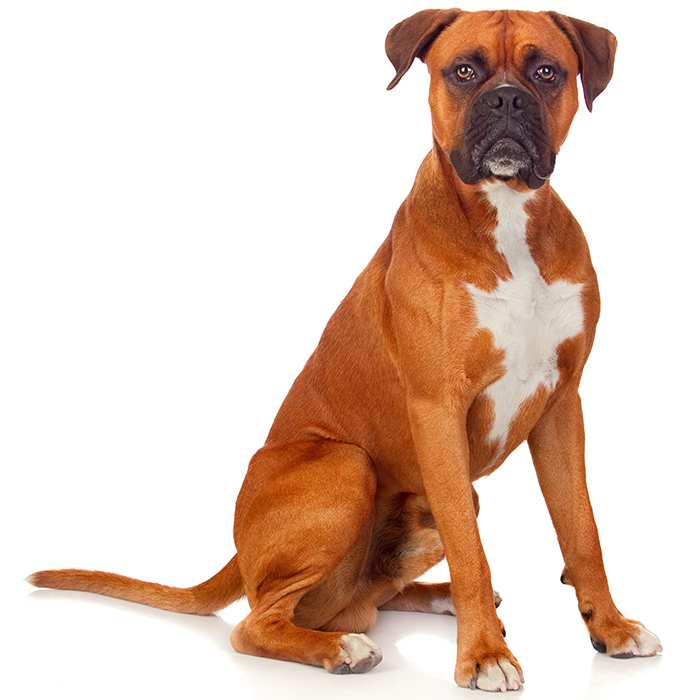

| Recommended for | Families, ideally with older children |
| Breed Classification | Working group |
| Other names | Deutscher Boxer |
| Lifespan | 10 -12 years |
| Size | Medium to large |
| Temperament | Loyal, affectionate, excitable |
| Intelligence | Above average |
| Tendency to bark | Above average |
| Maintenance Level | Medium |
| Health Risk | High probability of health issues during its lifetime, hence it is one of the more expensive breeds to insure. |
Insuring a Boxer?
Get our award-winning Nose-to-Tail Cover with up to $30k annual benefit limit, up to 90% of eligible vet bills back, and no sub-limits.
Get a quick quote
Is this breed right for you?
Try our breed selector quiz to find out your best matching breed!
Insuring a Boxer?
Get our award-winning Nose-to-Tail Cover with up to $30k annual benefit limit, up to 90% of eligible vet bills back, and no sub-limits.
Get a quick quote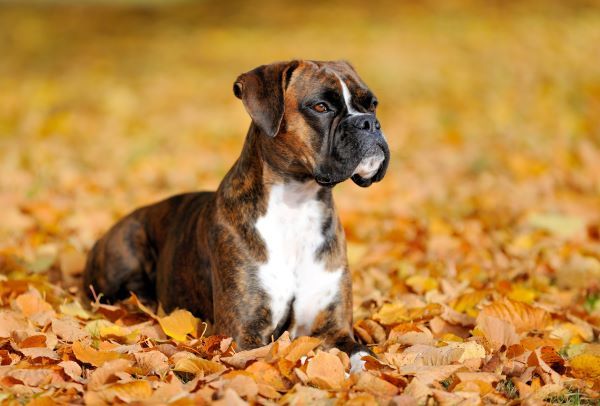
Breed history of Boxers
Boxers were first developed in Germany in the 1800’s from the now extinct Bullenbeisser (literally: bull-biter) hunting dog. The modern Boxer’s ancestry may also include the Great Dane and English Bulldog.
While the breed was developed for hunting, the end of the 1800’s saw a decline in its use as a hunting dog and the Boxer found a new position as a family companion and protector. Its strength, combined with its great loyalty and bravery when confronted with danger, also saw the breed put to work as a guard dog.
The first Boxer club was formed in Munich, Germany in 1895 and it published the first breed standard in 1902. At the outbreak of the First World War, Germany took the Boxer to the front, utilising it in a number of roles, from pack and message carrier to attack dog. The breed’s courage was especially notable during this time, even through heavy artillery bombardment.
The Boxer’s international popularity soared at the conclusion of the Second World War. Allied troops from all over the world, impressed with the strength and enthusiastic disposition of the breed, left Europe with Boxers they acquired there.
Over the years, Boxers have performed many jobs: athlete, cattle dog, police dog, war dog (in both world wars), watchdog, protection dog, and guide dog for the blind. The breed has long held a place within the ten most popular breeds in America and continues to do so.
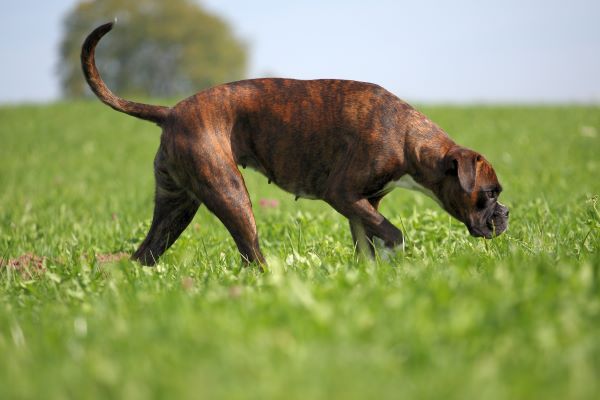
Physical description of Boxers
The Boxer is the tallest of the brachycephalic breeds – a group of dog breeds with short, squarish faces and muzzles, that also includes Pugs and Bulldogs.
Boxers’ soleful, dark brown eyes and furrowed foreheads give their face an alert, uniquely expressive look. They gave prominent jowels (loose flaps of skin and lips on either side of the mouth), strong very jaws and and a distinctive underbite (the lower jaw protrudes beyond the upper).
Boxers have a short sleek, smooth coat in tones of brindle or fawn (ranging from tan to red) with white markings. All white or predominantly white coats can also occur, but these dogs are susceptible to health problems and shouldn’t be bred.
In some parts of the world the Boxer’s long tail is docked and their ears may be cropped to a point – an operation which is illegal in Australia.
| Weight range | 25 to 32 kg |
| Height range | 53 to 63 cm |
| Colours | Brindle or fawn with white markings |
| Coat length | Short |
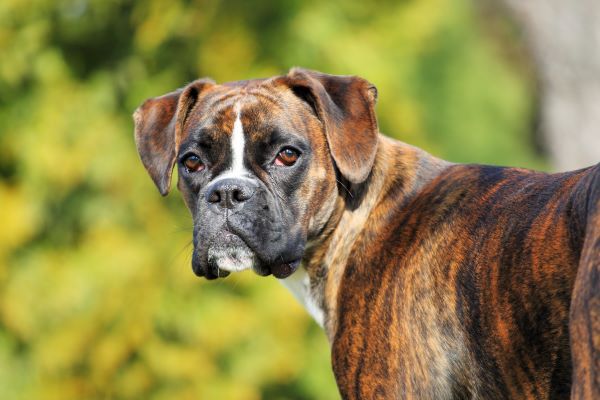
Boxer personality and temperament
Boxers are happy, loyal and trustworthy dogs that are devoted and attached to their family and will protect them with love, showing a tendency to be over protective at times. They can be quite wary and mistrustful of strangers, but will eventually warm up and show their charm.
One of the Boxer’s most notable characteristics is its desire for human affection and it has been a very popular companion dog for many years, mainly for its gentle temperament. Often referred to as the clown of the canine world, Boxers are also said to be the eternal puppy – energetic, bouncy and outgoing. They adore attention and may become destructive or problem barkers if neglected.
A backyard with high fences is strongly recommended as some Boxers are excellent jumpers. They will usually bark to alert their pack and for this reason are not recommend as an apartment dog.
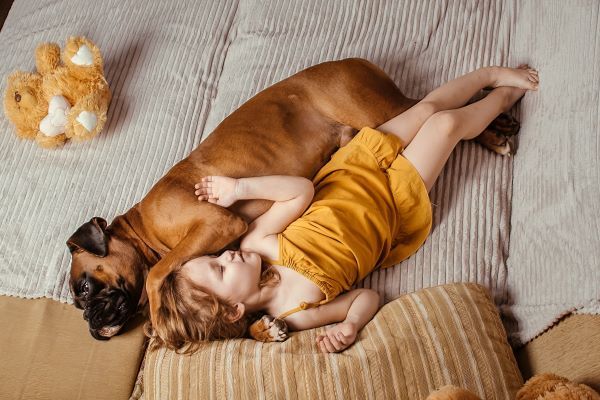
Boxers with kids and other pets
Boxers have a calm nature and tend to be gentle with children; however, early socialisation with children is recommended to ensure this is the case. As powerful, active and playful dogs, they may be too boisterous for children under ten and are ideally suited to families with teenagers.
Not always tolerant of other dogs of the same sex, most Boxers of opposite sexes enjoy each other’s company. They are usually a good fit for multi-pet households, although some pets may find them too boisterous and playful for their liking.
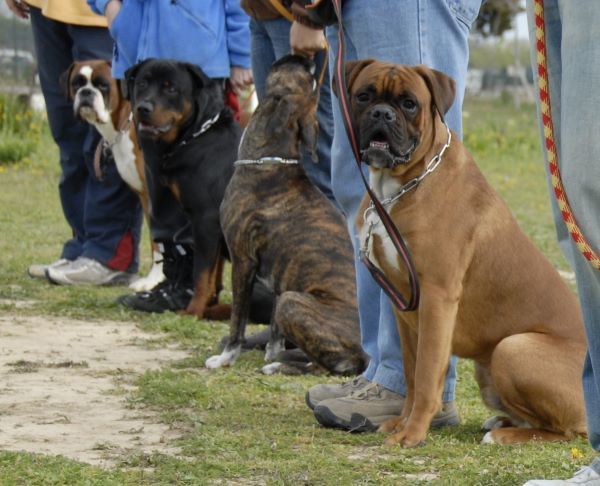
Boxer training and exercise
Boxers are active, energetic dogs who show high levels of enthusiasm for play and exercise, but it doesn’t have to be over the top. A daily walk of 30 minutes is ideal and they won’t mind if they miss out occasionally. Very strong, inquisitive and energetic, they love exploring new places and fetching just about anything you throw for them. Exercise should be undertaken on leash or in a securely fenced area; they should not be allowed to run loose because of their heritage as a chaser of wild game.
Boxer puppies spend a good deal of time jumping and leaping about, and are constantly in need of reminders to teach them to stay ‘down.’ Early socialisation and puppy training classes will help direct the their energy and exuberance in a positive way. They are generally willing to please and to obey commands, but if not provided with training and boundaries, particularly in their first year, they can become strong-willed and unruly.
Firm, consistent discipline is essential for this breed. With their playful attitude, they will not respond positively to harsh words, and patience will be needed. Highly trainable with the right approach, they are excellent problem solvers who can become bored with repetition. They excel in a wide range of canine sports, including obedience, agility, and herding, and they can be trained as service, assistance, and therapy dogs, and in roles such as drug detection and search-and-rescue.
| Energy level | High |
| Exercise requirements | High |

Boxer feeding and nutrition
The Boxer should be fed a premium, high-quality dog food appropriate to the dog’s age (puppy, adult, or senior), size and activity level.
Young Boxers may go through a skinny phase and struggle to fill out during years 1 to 2; if so they may still require 3 meals per day during this period. Adult Boxers should do well on 2 meals per day, but as the breed is prone to bloat, don’t let the Boxer gulp food down too quickly and consider using a slow feeder bowl.
Always check with your vet if you have any concerns about your Boxer’s weight or diet.
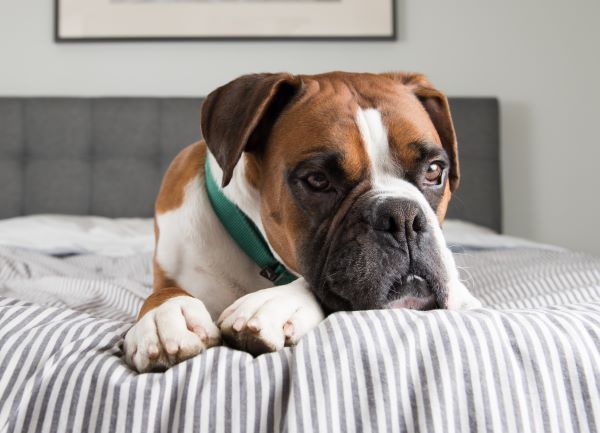
Boxer care and grooming
A low maintenance breed, Boxers shed relatively little hair and their short, shiny coat requires very little grooming. A good once-over with a soft brush, mitt or hound glove once or twice a week is recommended.
Their short snout and fairly long jowls mean they are prone to slobbering and some are very messy eaters. Apart from this, they tend to be clean dogs, needing a bath only occasionally.
Health issues for Boxers
- Congenital Heart Disease is the malformation of valves in the heart, causing serious problems that will often result in death within the first year of life. Those that have more mild forms of the condition will mostly survive but will show a tendency to avoid exercise, may have stunted growth or will occasionally faint. Cardiac arrest can occur at any time, but in most cases later in the dog’s life.
- Boxer Cardiomyopathy (BCM), an inherited diseases of the heart that can occur in Boxers, is a condition where the dog’s heart will beat erratically due to a problem concerning electrical conduction. This irregular heart beat can cause weakness in the animal, a lack of tolerance for exercise, fainting and even sudden death. If you see any of these signs in your dog, including lethargic behaviour, see your vet for immediate observation.
- Degenerative Myelopathy is a neurological condition similar to Lou Gehrig’s disease in people. The condition typically begins with rear end weakness but, over time, develops into full paralysis. The condition usually does not appear until the dog reaches maturity or in old age. There is currently no effective treatment or cure, and Boxers that are carriers of the gene should not be bred.
- Cancer can occur in Boxers, the most common types being mast cell and brain tumours as well as lymphoma. Skin cancer is also a quite common as Boxers but they can usually be removed fairly easy without longterm effects. Any lumps or bumps should be assessed immediately by a vet.
- Hip Dysplasia is a hereditary condition that is common in many dog breeds. The hip doesn’t develop correctly, and depending on the severity, the joint weakens and loses proper function. This can result in prolonged limping and debilitating pain and lameness, depending on the severity.
Not all conditions are covered by Pet Insurance. For details of Bow Wow Meow Pet Insurance cover, refer to the Product Disclosure Statement.
Thinking about insuring a Boxer
Thinking about insuring a Boxer
Learn moreThinking about insuring a Boxer
Learn moreFree engraved pet ID tag on sign up3
Customer Satisfaction
21 day cooling off
Easy to use Pet Portal

GapOnly® in vet claims
MORE INFORMATION:
Boxer Association of Victoria: http://www.boxersvictoria.com/
Boxer Club of NSW: https://oz.dogs.net.au/boxerclubofnsw/
QLD Boxer Club: https://www.qldboxerclub.org/
Boxer Rescue Network Australia: https://brna.com.au/

